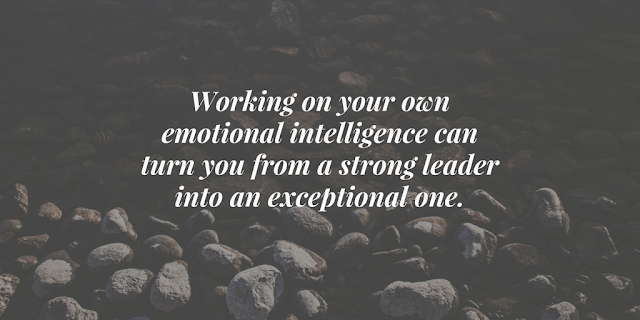I recently posted a blog advocating putting what is best for
your business ahead of your personal feelings. Expanding on that post, I would
argue that effective leadership is not only about keeping your emotions in
check, but leading your team with emotional intelligence.
Emotional intelligence is the ability to understand and
calibrate your own emotions as well as the ability to respond effectively to
those of others. It is also being aware of how your words and actions affect
your colleagues and team members. Being in tune with your emotions and the
emotions of others, as well as having the ability to understand the dynamics of
your environment, are key skills to possess when leading a team.
According to Daniel Coleman, an American psychologist who
has written extensively on emotional intelligence, there are five attributes
that leaders with high levels of emotional intelligence possess:
- Self-awareness: Leaders who are self-aware possess the ability to understand their feelings and how their feelings affect other people.
- Self-management: The best managers are those who are able to keep their feelings in check and remain in control even during trying times.
- Empathy: If you are able to walk in others’ shoes and be compassionate, you will have stronger and more positive relationships with fellow team members.
- Motivation: Working towards the high standards and goals you set for yourself is critical to managerial success.
- Social skills: Managers who can effectively communicate, speak passionately and encourage team members are more likely to motivate performance and drive positive results.
Understanding emotional intelligence is only part of the
equation. Let’s face it. Very few of us are born with the behaviors that
comprise strong emotional intelligence and like most things, we have to work to
develop these soft skills. With that in mind, here are some things we can all
do to improve upon our ability to lead with emotional intelligence:
- Keep a journal to help you become more self-aware
- Slow down and reflect on how you are feeling and behaving
- Practice being calm and centered
- Hold yourself accountable by making a commitment to admit mistakes and take responsibility
- Be positive, optimistic and hopeful and encourage that in others
- Take stock of your own performance on a regular basis
- Pay attention to other people’s feelings and body language as a way to gauge how you are coming across and affecting others
- Learn conflict resolution
- Focus on encouraging and praising team members
At the end of the day, the better we can relate to and work
with others, the more successful we will be. Working on your own emotional
intelligence can turn you from a strong leader into an exceptional one.


